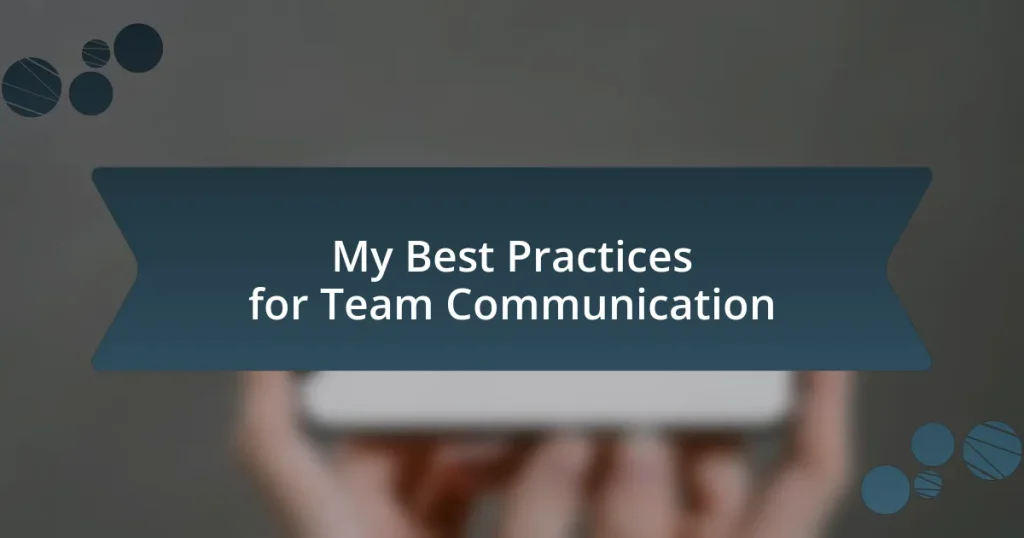Key takeaways:
- Understanding diverse communication styles and preferences can enhance team collaboration and workflow.
- Regular feedback sessions create a culture of openness, turning anxiety into motivation and strengthening team bonds.
- Setting clear communication goals empowers team members and improves engagement, leading to innovative contributions.
- Fostering a positive communication culture through celebration and vulnerability enhances relationships and team dynamics.
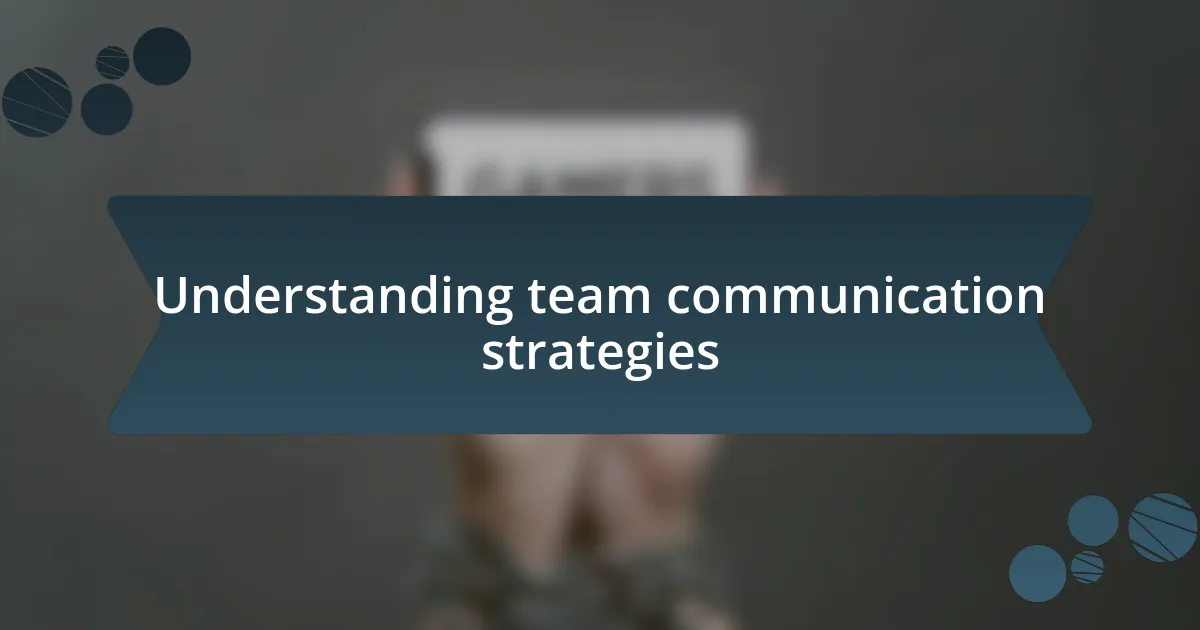
Understanding team communication strategies
Understanding team communication strategies requires an appreciation for the diverse personalities and communication styles within the group. I remember a time when I led a project where one team member preferred direct emails while another thrived in face-to-face conversations. Recognizing these differences transformed our workflow and fostered a more collaborative environment.
Effective strategies also include the regular use of feedback loops. Early in my career, I was part of a team that only held quarterly reviews, which felt stale and uninformative. By incorporating weekly check-ins, we cultivated a culture where everyone felt heard and valued, ultimately enhancing our projects.
It’s crucial to evaluate the tools we use for communication. I often ponder how many platforms we juggle daily—emails, messaging apps, project management tools—and that can lead to confusion. In my experience, streamlining communication through a single platform not only reduces miscommunication but significantly boosts team morale. How does your team approach this?
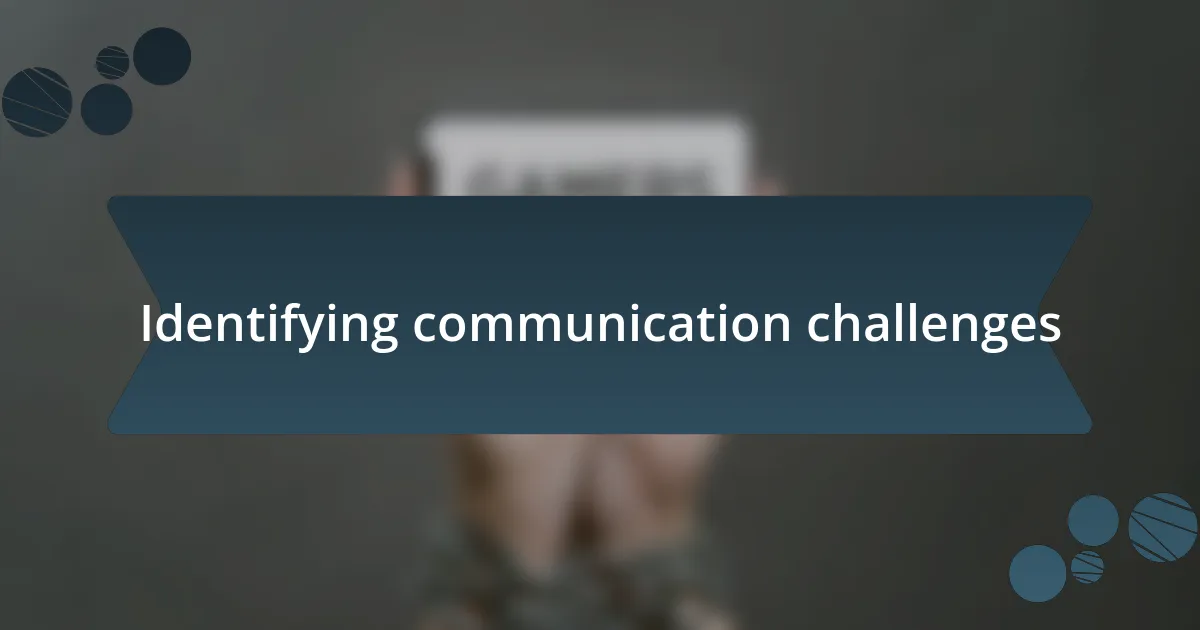
Identifying communication challenges
Identifying communication challenges is often the first step toward improving team dynamics. I’ve encountered situations where unclear expectations led to frustration and misunderstandings among team members. For example, during a project rollout, I noticed certain tasks were not aligned because some team members assumed they were on different pages. This misalignment made me realize how vital it is to openly discuss and clarify communication styles, as well as the overall goals of the team.
To pinpoint these challenges effectively, you might consider looking for signs such as:
- Increased conflicts or misunderstandings in meetings.
- Feedback indicating team members feel left out or uninformed.
- A noticeable drop in productivity or engagement during collaborative tasks.
- Inconsistent messaging or duplicated efforts that create confusion.
- Team members expressing frustration with the communication tools in use.
By addressing these signs early, I’ve found that teams can strengthen their collaboration and work toward a more cohesive environment.
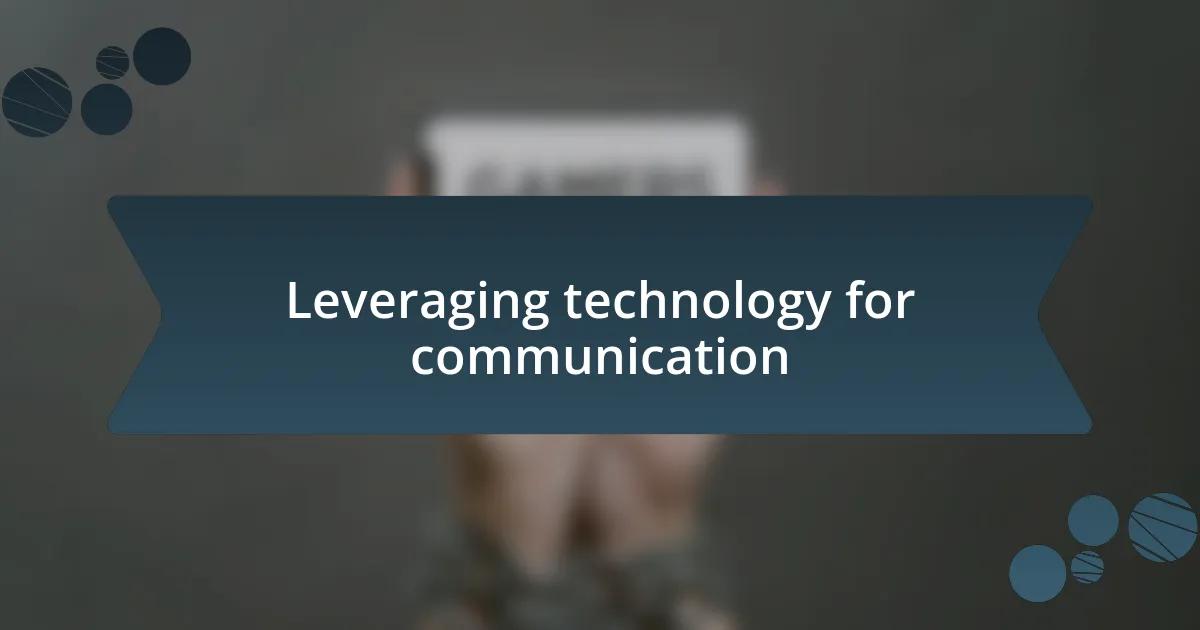
Leveraging technology for communication
Leveraging technology for communication can profoundly change how a team interacts. I remember when we implemented a project management tool that not only helped track tasks but also facilitated real-time conversations. Switching from email chains to a dedicated platform made a huge difference in reducing response times and preventing misunderstandings, creating a more dynamic and collaborative atmosphere.
The right communication tools promote clarity and efficiency, allowing teams to function seamlessly. For instance, during a recent project, we utilized video conferencing software for our weekly check-in calls. Not only did it save us travel time, but the ability to see each other’s faces added a personal touch that was often missing in text-based exchanges. It’s remarkable how technology can bridge the distance and foster stronger relationships among team members.
While choosing the right tools might seem overwhelming at times, I recommend assessing your team’s specific needs first. For me, involving team members in the selection process led to higher buy-in and effective adoption. Technology should serve as a means to connect, not complicate, our communications, and when used wisely, it can unleash the full potential of team collaboration.
| Communication Tool | Benefits |
|---|---|
| Formal communication, asynchronous updates | |
| Project Management Software | Task tracking, real-time collaboration |
| Video Conferencing | Face-to-face interaction, immediate feedback |
| Instant Messaging | Quick questions, informal communication |
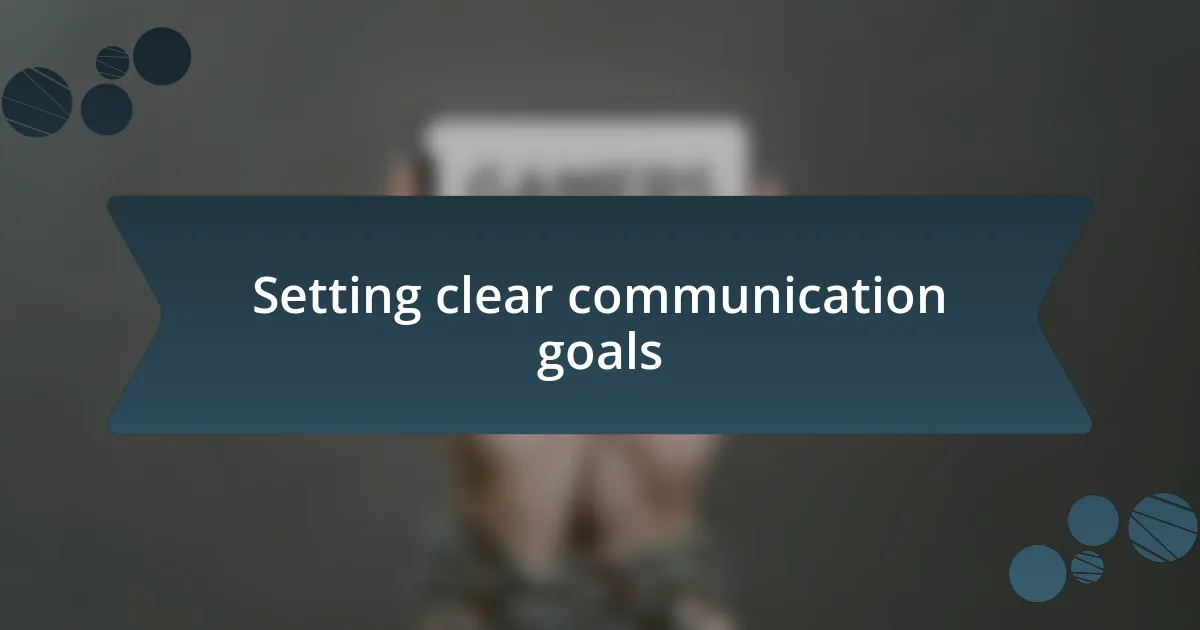
Setting clear communication goals
Setting clear communication goals is essential for any team to thrive. In my experience, it’s the first step that can really align everyone’s efforts. I recall a time when our leadership team sat down to establish what we genuinely wanted to achieve through our communication. We didn’t just throw around generic terms; we identified specific objectives like reducing misunderstandings and improving productivity. This clarity transformed how we approached every discussion.
When we set those goals, something magical happened. Team members felt empowered because they understood the purpose behind their messages. I remember a colleague who often hesitated to share ideas, fearing they wouldn’t resonate. Once we clarified our goal of fostering open dialogue, she started contributing regularly, leading to innovative solutions we hadn’t considered before. Isn’t it fascinating how clearly defined objectives can change the dynamics of a team?
I also found it helpful to revisit these goals periodically. Regular check-ins allowed us to assess our progress and make adjustments if needed. During one of those sessions, we realized our goal of quick updates was often overshadowing deeper discussions. This insight led us to refine our approach, emphasizing both efficiency and meaningful engagement. So, have you taken the time to evaluate your team’s communication goals lately? Establishing and refining these can significantly enhance your overall collaboration.
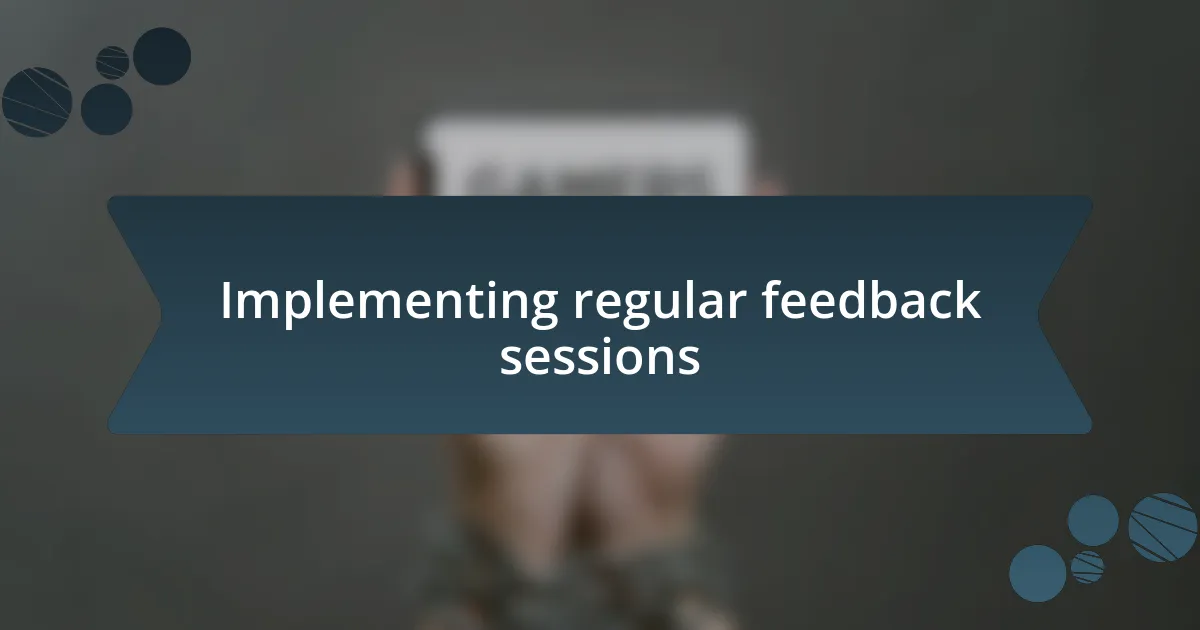
Implementing regular feedback sessions
Implementing regular feedback sessions has been a game-changer in my teams. I remember the first time we scheduled these sessions; I was skeptical about their impact. However, as we began sharing thoughts more openly, I witnessed a shift in our collective mindset. Team members felt heard and valued, which naturally encouraged candid conversations. Who wouldn’t feel motivated when their input could shape the team’s direction?
One session in particular stands out to me. We discussed a recent project, and instead of a typical critique, we focused on constructive feedback. I saw how this approach transformed a teammate’s anxiety into motivation. They suggested modifications that ultimately enhanced our end product. It made me realize that feedback doesn’t have to be daunting; it can strengthen our bonds and fuel creativity.
What I find especially rewarding is the evolution of trust that develops over time with regular sessions. It’s like nurturing a garden; the more you tend to it, the more it flourishes. I still remember a hesitant contributor who blossomed from these discussions. Now, they actively seek feedback on their ideas, showing a remarkable transformation. Have you considered how fostering this environment could empower your team?
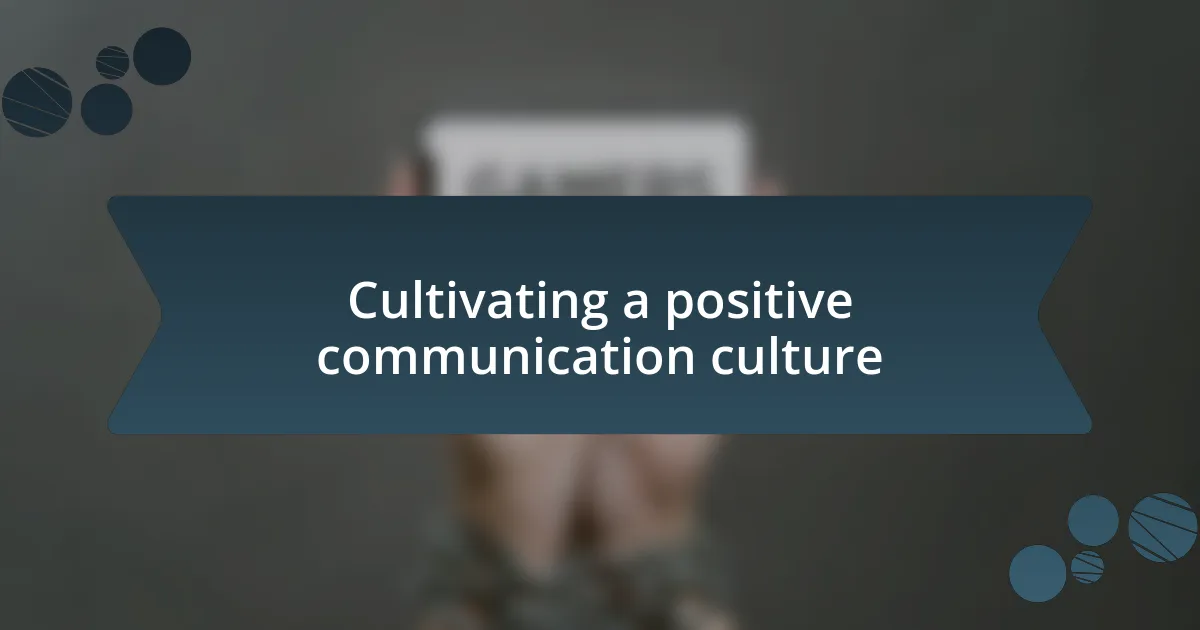
Cultivating a positive communication culture
Creating a positive communication culture is about more than just exchanging information; it’s about building relationships. In one of my earlier teams, I made it a point to celebrate small victories together. This not only boosted morale, but also opened up the floor for each person to share their thoughts and feelings without the fear of judgment. Isn’t it amazing how a simple acknowledgement can pave the way for richer conversations?
Another aspect I’ve found crucial is encouraging vulnerability. I remember a time when I shared a personal challenge I was facing at work. Surprisingly, it encouraged others to open up about their struggles too. We formed a genuine bond through these shared experiences, allowing openness to flourish. Have you ever experienced that kind of connection? It’s a reminder that fostering empathy can profoundly impact how we communicate.
Lastly, I’ve learned that consistency is key. When I regularly check in with my team, it reinforces the message that everyone’s contributions matter. I can vividly recall a colleague who was once hesitant to speak up but became an active participant after realizing their voice was valued in our ongoing dialogue. It’s incredible to see how commitment to positive communication can transform a team dynamic. What changes have you noticed when you prioritize this kind of culture?











